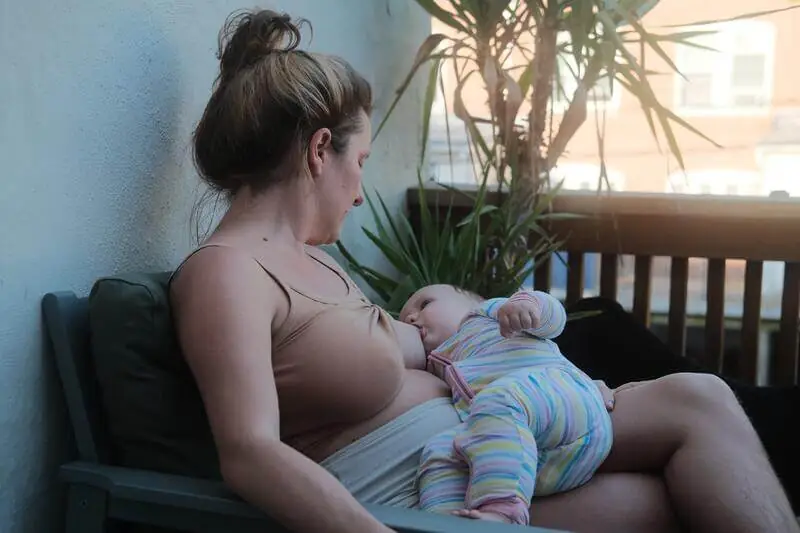If you’re wondering how long for hormones to balance after weaning, you’re not alone. Weaning—whether gradual or abrupt—marks a significant transition that brings a complex shift in hormone levels as your body moves from lactation back toward its natural pre-pregnancy hormonal rhythm. Understanding this timeline and what happens during this adjustment can ease the process and help you support your physical and emotional well-being.
In this comprehensive guide, we’ll explore how long it typically takes for your hormones to balance after weaning, what hormonal changes to expect, and practical strategies to support a smoother transition. Whether you’re a new mom navigating postpartum changes or someone planning your weaning journey, this article will provide valuable insights tailored to your needs.
What Happens to Hormones Immediately After Weaning?
When breastfeeding, your body maintains elevated levels of specific hormones to support milk production. Most notably:
- Prolactin: This hormone stimulates milk production and keeps reproductive hormones like estrogen and progesterone suppressed, naturally delaying ovulation.
- Oxytocin: Often called the “love hormone,” it helps with milk ejection and promotes bonding but also contributes to feelings of calm and maternal connection.
Once you begin weaning and reduce or stop nursing, prolactin levels start to fall. This decline signals your body to gradually resume its normal menstrual cycle by allowing estrogen and progesterone to rise again. However, this process is not instantaneous and can take weeks to months for full hormonal rebalancing.
How Long for Hormones to Balance After Weaning: Typical Timelines
The General Timeline for Hormonal Rebalancing
- Within 1 Month: Prolactin levels begin to decline noticeably as breastfeeding frequency lessens. You might experience breast engorgement or tenderness during this shift.
- Around 4-6 Weeks: Many women see the return of menstrual cycles, but these may be irregular or accompanied by PMS-like symptoms as hormones fluctuate.
- 3 Months Post-Weaning: Many hormonal systems, including the hypothalamic-pituitary-ovarian (HPO) axis, begin recalibrating. This is often when hormone levels stabilize closer to pre-pregnancy baselines.
- Up to 6-12 Months: For some, especially those who breastfed extensively or exclusively for a long time, full hormonal balance may take up to a year or more after complete weaning. Hormone levels and menstrual cycles continue to normalize gradually.
Note: Individual experiences vary widely. Factors influencing timing include duration and intensity of breastfeeding, age, health status, nutrition, stress levels, and underlying conditions such as thyroid imbalances.
Why Does It Take So Long?
The hormonal orchestration of lactation and reproduction is complex. Elevated prolactin naturally suppresses ovulation to support the baby’s nutritional needs through breastmilk, so your body’s systems prioritize milk production. Hormone receptors, neuroendocrine pathways, and glandular functions all require time to “reset” after this extended period.
Signs That Your Hormones Are Rebalancing After Weaning
- Resumption of menstrual bleeding (though initial cycles may be irregular or heavy).
- Return of ovulation and fertility, which may resume before a full cycle is observed.
- Changes in mood, energy levels, and libido as estrogen and progesterone regain balance.
- Reduction in breast tenderness and milk production.
- Possible recurrence of premenstrual symptoms like bloating, irritability, and cramps.
Knowing what to expect helps you distinguish normal hormonal shifts from symptoms that might need medical attention.
How to Support Your Hormonal Balance After Weaning

1. Gradual Weaning When Possible
A slow, gradual reduction in breastfeeding allows hormones to taper gently, giving your body time to adapt without shock. This reduces symptoms such as mood swings, engorgement, or irregular cycles.
2. Prioritize Nutrition to Support Hormonal Health
Eating a balanced, nutrient-rich diet supports hormone production and metabolism. Focus on:
- Healthy fats (avocados, nuts, seeds, oily fish) to aid hormone synthesis.
- Lean proteins to support repair and hormone transport.
- Plenty of vegetables and fruits for antioxidants and fiber.
- Foods rich in vitamin D, B vitamins, zinc, and magnesium.
Hydration is also essential during this phase.
3. Manage Stress to Protect Hormonal Equilibrium
Chronic stress elevates cortisol, which can further disrupt reproductive hormones. Incorporate stress-reducing activities such as:
- Meditation or deep-breathing exercises.
- Light to moderate exercise like walking or yoga.
- Adequate sleep and rest.
4. Stay Hydrated and Exercise Regularly
Both hydration and physical activity positively regulate hormone function and improve mood and energy levels.
5. Track Your Cycle and Symptoms
Keeping a journal of your menstrual cycle, mood fluctuations, and physical symptoms can inform discussions with healthcare providers if irregularities persist.
When to Seek Medical Advice
While hormonal rebalancing after weaning is typically a natural, gradual process, consult a healthcare provider if you experience:
- Absence of menstruation beyond 6 months post-weaning without pregnancy.
- Severe mood changes such as depression or anxiety.
- Persistent breast pain, lumps, or abnormal secretions.
- Signs of thyroid dysfunction (fatigue, weight changes, hair loss).
- Unusual bleeding or spotting.
Medical evaluation may include hormone level testing or thyroid function screening to exclude treatable disorders.
The Role of Prolactin and Other Key Hormones During and After Weaning

To fully grasp how long for hormones to balance after weaning, it’s important to understand the hormones involved in lactation and postpartum recovery, and their timeline in adjusting after breastfeeding ends.
Prolactin: The Milk-Making Hormone
Prolactin is the primary hormone responsible for stimulating milk production. During breastfeeding, prolactin levels remain high because the act of nursing signals the pituitary gland to continue producing it.
- After weaning, prolactin levels drop quickly because the stimulus for production (nursing or milk expression) is no longer present.
- However, it can take several weeks for prolactin to normalize fully, which explains why some women may continue to experience breast fullness or minor milk leakage during this phase.
Estrogen and Progesterone: The Reproductive Hormones
During pregnancy, estrogen and progesterone levels surge to prepare the body for childbirth and lactation, but they drop sharply after delivery. When breastfeeding, high prolactin suppresses the pituitary’s release of gonadotropins, keeping estrogen and progesterone low and delaying menstrual cycles.
- As prolactin falls post-weaning, estrogen and progesterone levels gradually increase, allowing the menstrual cycle to resume.
- The balance between these hormones is critical for cycle regularity, mood stability, and reproductive health, and their recovery timeline affects symptoms such as PMS, mood swings, and libido changes.
Oxytocin: The Bonding Hormone
Oxytocin, released during nursing, promotes milk ejection and the mother-infant bond. After weaning, oxytocin release related to feeding diminishes but continues to play a role in social bonding and emotional regulation.
- The decrease in oxytocin is often experienced emotionally, as some women report feelings of sadness or loss that parallels physical hormonal transitions.
Cortisol and Stress Response
The postpartum and weaning periods can be stressful physiologically and emotionally, affecting cortisol levels.
- Elevated cortisol from stress can interfere with reproductive hormone balance, prolonging the time it takes for normal cycles to return.
- Managing stress is therefore essential to supporting the hormonal balancing process.
The Influence of Individual Factors on Hormonal Recovery After Weaning
Several personal and lifestyle factors impact how long it takes for hormones to balance after weaning. Understanding these nuances can help you personalize your recovery plan.
Duration and Exclusivity of Breastfeeding
- Mothers who breastfed exclusively for 6 months or longer may experience a slower return to hormonal normalcy compared to those who supplemented or weaned early.
- The full suppression of ovulation for extended months means the HPO axis (hypothalamic-pituitary-ovarian axis) requires more time to restart.
Age and Reproductive Health
- Women over 35 or those with preexisting hormonal imbalances might notice longer hormonal reset times.
- Conditions like polycystic ovary syndrome (PCOS) or thyroid disorders can complicate the process and warrant close monitoring.
Nutritional Status and Body Weight
- Adequate macro- and micronutrient intake supports hormone synthesis and metabolism.
- Extremes of body weight (underweight or obesity) can disrupt menstrual regularity and extend hormonal imbalances.
Emotional Well-being and Sleep Quality
- Poor sleep, common in postpartum periods, disrupts hormone regulation including melatonin and cortisol rhythms.
- Persistent anxiety or depression can delay reproductive hormone recovery.
Weaning Approach: Gradual vs. Abrupt
- Gradual weaning allows the pituitary gland and ovaries to slowly regain function.
- Sudden cessation can cause more abrupt hormonal fluctuations, leading to symptoms like mood swings, breast discomfort, and irregular cycles.
Supporting Your Hormonal Health With Supplements and Natural Therapies

Certain supplements and natural remedies may support hormonal balance and ease symptoms after weaning.
Vitex (Chasteberry)
- Traditionally used to balance menstrual cycles and reduce PMS symptoms.
- May help regulate the pituitary gland’s release of prolactin and other hormones.
Omega-3 Fatty Acids
- Possess anti-inflammatory properties and support brain health.
- Associated with mood stabilization and hormone regulation.
Magnesium
- Supports relaxation, reduces muscle cramps and headaches related to hormonal changes.
- Helps regulate cortisol and improve sleep quality.
Adaptogenic Herbs (Ashwagandha, Rhodiola)
- Help the body manage stress and maintain endocrine balance.
- May indirectly aid the hormonal normalization process post-weaning.
Caution: Always consult your healthcare provider before beginning supplements, especially postpartum.
Tracking Your Progress: When Is Hormonal Balance Achieved?
Hormonal balance can be subjective but some useful indicators include:
- Regular, predictable menstrual cycles (typically occurring every 21 to 35 days).
- Normal mood and energy levels without significant swings tied to the menstrual cycle.
- Stable libido and menstrual symptoms returning to your pre-pregnancy baseline.
- No breast tenderness or abnormal discharge related to prolactin surges.
You may consider hormone testing if menstrual irregularities or symptoms persist beyond 6 months to a year.
Practical Tips for Navigating the Weaning Hormonal Transition
- Give your body grace and time. Hormones need weeks to months to reset; rapid results may lead to frustration.
- Maintain a consistent sleep schedule—quality sleep nurtures endocrine balance.
- Practice mindfulness and stress reduction techniques daily.
- Stay physically active with gentle exercise to boost mood and metabolic health.
- Stay hydrated and nourish your body with a diet focused on whole foods and adequate protein.
- Monitor your cycle and symptoms, keeping a simple journal to detect patterns.
When Hormonal Imbalance May Need Medical Attention After Weaning
If after several months you experience any of the following, a healthcare provider should evaluate you:
- Amenorrhea (absence of periods) lasting more than six months post-weaning without pregnancy.
- Excessive bleeding or very painful cycles.
- Persistent mood disorders, severe anxiety, or depression.
- Symptoms suggestive of thyroid or adrenal dysfunction (fatigue, significant weight changes, hair loss).
- Any lumps, abnormal nipple discharge, or persistent breast pain.
Early diagnosis allows targeted treatment that can help restore your hormonal health sooner.
FAQ: How Long for Hormones to Balance After Weaning

Q: Can hormonal birth control affect hormone balance after weaning?
A: Yes, hormonal contraceptives may influence your body’s natural hormonal cycle resetting. Discuss timing and options with your provider.
Q: Will my fertility return immediately after weaning?
A: Fertility usually returns as prolactin decreases, but timing varies widely. Ovulation can precede menstruation, so contraception may be needed if pregnancy is not desired.
Q: What if my period returns but is very irregular?
A: Irregular cycles for several months post-weaning are common as hormone levels stabilize. If cycles remain erratic beyond six months, consult a doctor.
Conclusion
Understanding how long for hormones to balance after weaning helps set realistic expectations and reduce anxiety during this transitional time. Typically, most women begin hormonal normalization within 4-6 weeks, with significant stabilization occurring by 3 months, though full balance can take up to a year depending on breastfeeding patterns and individual health factors.
